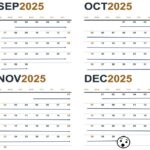Profit Levers: Where to Find Value in Uncertain Times
CEOs really do think differently. When I asked my CEO why we were doing e-auctions, he looked at me and said something like, “When times are tight, we can seek to improve our profits from one of three sources: employees, customers, or suppliers. And I’m going to choose suppliers every time.” Whoa. When I repeat this in a room of executives, I get thoughtful looks followed by slow nods. But when I repeat it in a room full of business owners, founders, and CEOs, the nods are immediate and enthusiastic. Today’s article explores these three profit streams, the role procurement plays in them, and how our current global unpredictability is affecting businesses.
My Favorite Profit Lever
It will surprise no one who has been reading my articles for long that my favorite negotiation tool to increase profits is a well-run e-auction. Especially when run after an RFP, e-auctions tend to increase value by another 2.5-3%. While I can get those results with a direct negotiation, it takes a whole lot more time and effort to get a 3% reduction through direct negotiation than with an e-auction. You can lay off 3% of your workforce, raise prices by 3%, or reduce costs by 3% (or more), although I know companies in seriously uncertain times will do all three.
Three levers
There are certainly businesses who first seek to increase profits from their employees or customers instead of suppliers. For employees, this shows up as layoffs, reducing benefits, reducing or eliminating bonuses (or even pay), hiring freezes, changing paycheck frequency, and similar actions. This can be done gracefully and well, but tends to lower employee morale. Similar to the procurement team needing to be strong to push on suppliers, the Human Resources team must be strong to push on employees. Increasing profits through employees can be a good thing in improving efficiency if done well.
For seeking additional profits through customers, the sales team must be strong. Increased profits might come from increasing prices, bundling products together, raising minimum orders to reduce the impact of fixed costs (like freight), and similar actions. Again, this might be a good thing if done well when the sales team can find additional value for customers in exchange for higher prices.
The third lever near and dear to my heart is getting increased profits from suppliers, typically by reducing costs. A true supplier partner (not a vendor) might be able to offer mutual increased value through innovative products (hence adding value for customers and justifying a price increase), but most supplier relationships are not at this level. Enter the strong procurement team, who understands which negotiation techniques to use with which suppliers (such as e-auctions, negotiations, seeking rebates, software rationalization, etc.). As with the other two levers, this one requires a strong and creative procurement team.
Procurement and Suppliers
It’s always tricky to be a procurement professional in an organization focused purely on cost reduction (which is typically an organization where supply chain reports to the CFO). In a cost reduction-focused business, you’re constantly battling to consider full value instead of simply price. Suppliers want to be dealt with fairly, have as much transparency into their customer’s process as possible, and get great feedback on their proposals. Reverse auctions (recently I’ve also heard of e-auctions called “Interactive Bids”) do all three of these, providing much more feedback to suppliers and offering them clarity on their proposals.
If you’re part of a team being pushed to find new cost savings, consider running a few e-auctions. There are some good options to run only a couple events instead of a full program (contact me if you’d like to talk about a 3- or 5-auction package where I do it all for you, including providing the software). Auctions might also be a good tool if you’re looking to move some business from an incumbent supplier in a high-tariff or high-uncertainty area to a lower-risk area with the minimum possible impact to price. You know you’ll pay more to move it, but you want to keep that price increase as small as possible. Make sure you run your e-auctions thoughtfully, probably after an RFP, continuing to keep a strong relationship with your suppliers. My book Transform Procurement: The Value of E-auctions also has thoughts on gathering buy-in, maintaining supplier relationships, and writing a good scope of work.
The Elephant in the Room
Having had some time to reflect on these three profit levers, I would be remiss in not mentioning a quiet fourth: Shareholders. In theory, a company could pull additional profits from shareholders by not offering a stock dividend, buying back stock, downgrading “premium” shares into regular shares, or similar approaches. Some companies do this, especially when times get especially difficult. But I view the shareholder losses as a result of lower profits more than a lever companies can actively pull to increase profits. While shareholders in a company have a stake in results and can impact company profits indirectly, they’re not really a lever businesses tend to pull in uncertain times.
Uncertain Times
It’s no secret that businesses, especially manufacturers, are feeling the impact of uncertainty. Tariffs, geopolitical instability, and even climate change are putting continuous pressure on supply chains. ISM’s most recent quarterly report continues to put the manufacturing index below 50 (shrinking). Commodity container ships are taking 2.6 days to get into a berth in Chinese ports (article source). While we can continue to work on predicting suppliers’ bad days as best we can, that is often a more short-term solution. All of this is to say that if you are a supply chain professional, keep your chin up, stay aware of the global forces that impact your world, and seek creative solutions to create and capture value for your business. If you’d like to talk to me about your creative solutions, let’s chat. If you’d like to get these articles weekly straight to your inbox and never miss one, sign up for my newsletter.
My book, Transform Procurement: The Value of E-auctions is now available in ebook, paperback and even hardcover format: https://www.amazon.com/dp/B0F79T6F25




